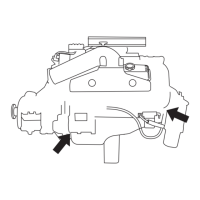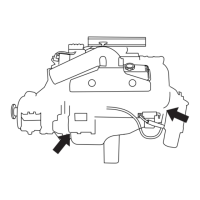6-4
Indmar Marine Engines
ENGINE OIL
Oil Consumption
Just because an engine uses oil does not mean it is not
healthy or it is defective. A marine engine gets worked
very hard compared to an automobile engine. When you
are cruising down the highway in your car, once it gets
up to speed it only takes a small amount of the engine’s
power (around 20 HP) to maintain the speed of the vehi-
cle on a flat road. A boat, on the other hand, is utilizing a
significantly larger amount of the engine’s output to keep
the boat moving. Then add the extra load of ballast bags
and a wakeboarder, surfer or skier and we are utilizing
even more of the engine’s capacity. The harder you work
the engine, the more consumables (gasoline and oil) it
needs to keep running. As long as there are not other
detrimental operating characteristics such as low power,
oil fouled plugs, constant smoking, etc., do not be con-
cerned if the engine uses some oil ... it’s the nature of
the beast.
Checking Oil
Figure 6.1 – Engine Oil Dipstick Location
Check the oil level with the dipstick every time you get
fuel. To get an accurate reading, your engine should be
warm and the boat should be level. For best results wait
about 2 minutes after you turn off the engine to allow the
oil to drain into the oil pan, giving you a more accurate
reading.
Figure 6.2 – Dipstick
INDM-B001

